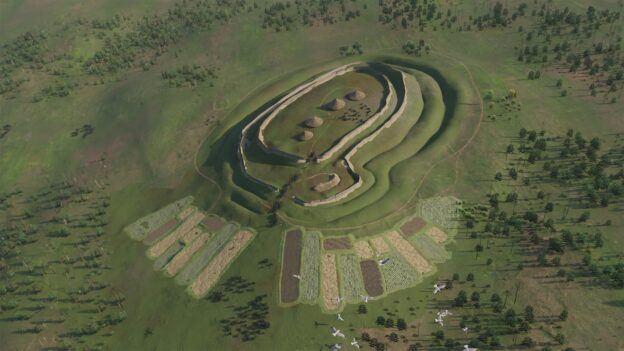GUARD Archaeologists’ excavation of a hilltop settlement near Perth revealed a lost settlement that thrived during the Iron Age only to mysteriously fade away before the coming of the Romans, new publications reveal.
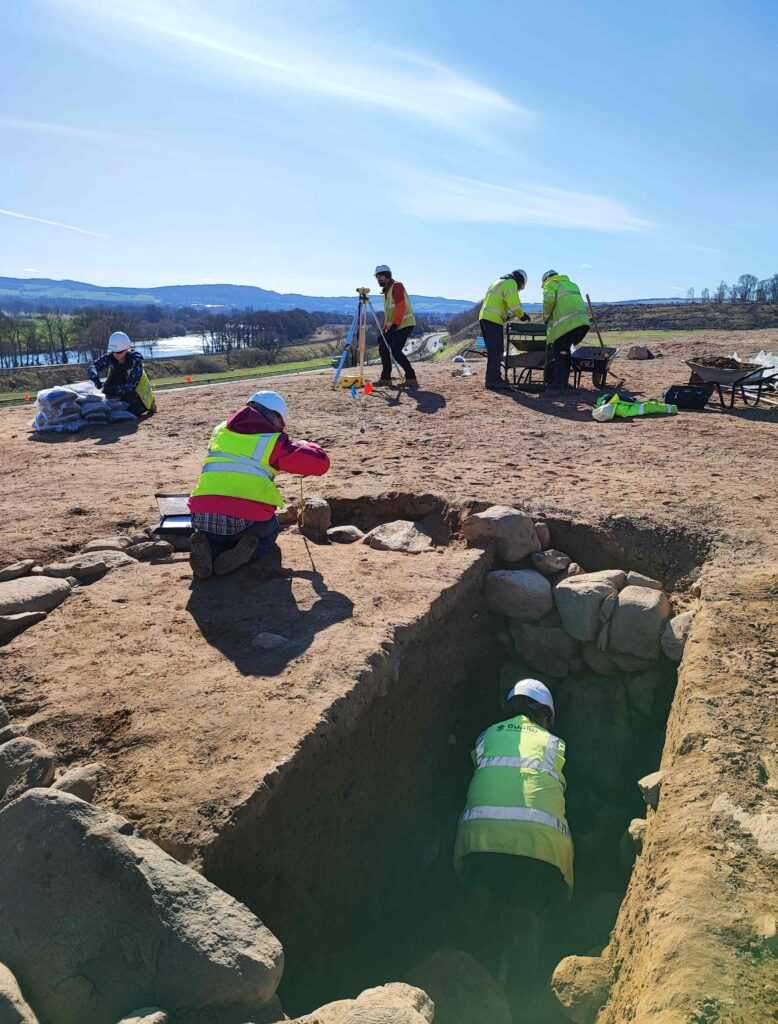
The excavation was undertaken by GUARD Archaeology in 2022 as part of the £118m Cross Tay Link Road project that involved the construction of a new 3-span bridge over the River Tay and six kilometres of new road by BAM Nuttall Ltd. Since the excavation was completed, GUARD Archaeologists have led a team of specialists drawn from across Scotland including National Museums Scotland, the universities of Glasgow and Stirling, various independent specialists and GUARD Archaeology itself, to analyse the archaeological evidence and reveal new insights into Iron Age Scotland.
‘Perth and Kinross Council are delighted that these archaeological discoveries, as a result of our construction of the Cross Tay Link Road, have led to a significant advancement in the understanding of an Iron Age community that once lived here,’ said Jillian Ferguson, Roads Infrastructure Manager at Perth and Kinross Council. ‘Many drivers and passengers travelling the new road may not imagine that they cross the site of a prehistoric fort. The construction of the Cross Tay Link Road at this site has provided an inadvertent but invaluable opportunity to learn more about how people near Perth lived more than two thousand years ago.’
‘The hillfort at Broxy Kennels was first identified in the 1960s on aerial photographs taken along the proposed route of the then-new A9 road,’ said GUARD Project Officer Kenny Green, who directed the excavation. ‘Without these aerial photographs no-one would have known there was a hillfort here as there was no trace of it on the ground. Centuries of ploughing had removed any surface trace.’
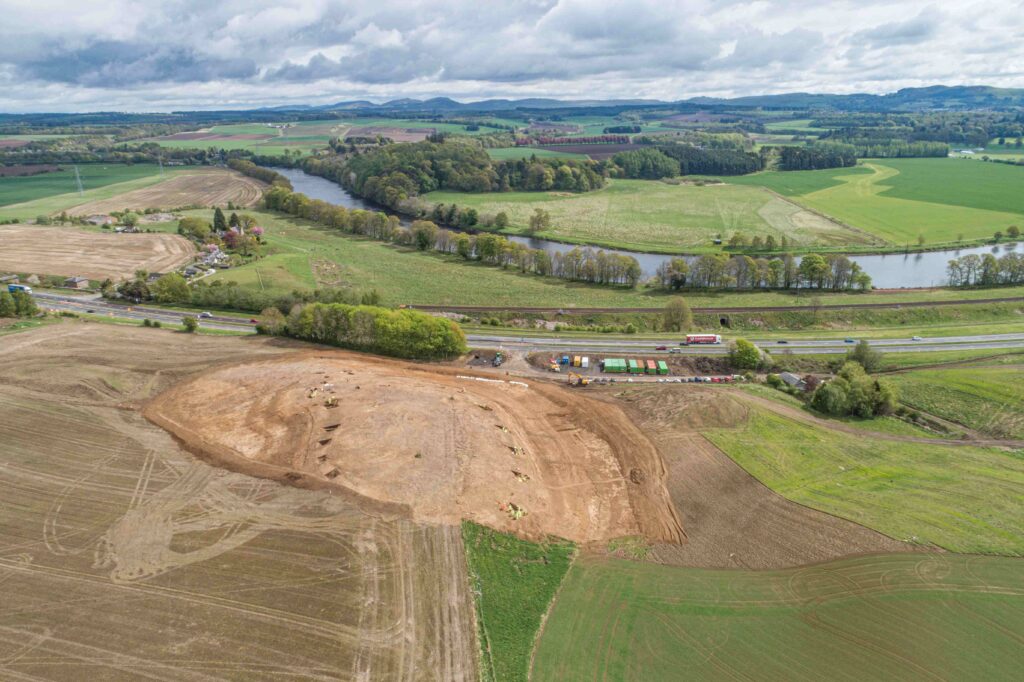
The excavation team discovered that it was during the Iron Age when people decided to settle permanently on the hill here. Many Iron Age hillforts can be found across Britain, with almost 1500 in Scotland alone. But these were not all occupied at the same time and these were not military forts. Instead, these were fortified hilltop settlements. The location of Broxy Kennels may have been chosen as a prominent feature in the landscape at a major bend in the River Tay, visible to anyone travelling from the north or south.
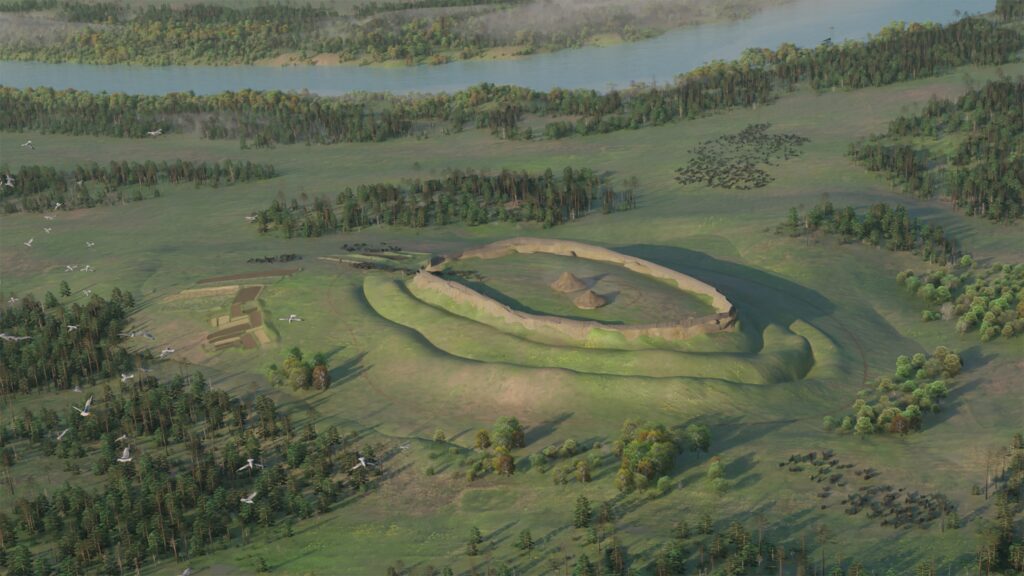
‘The first phase of building the Iron Age settlement at Broxy Kennels consisted of digging two massive ditches and constructing earthen ramparts from the upcast soil,’ said Kenny Green. ‘Radiocarbon dates reveal that this happened around 550 to 400 BC. Our team discovered the charred remains of wattle panels and pieces of daub from the roundhouses that belonged to this time. These had been thrown into the ditches when the settlement had been cleared of old buildings at some point.’
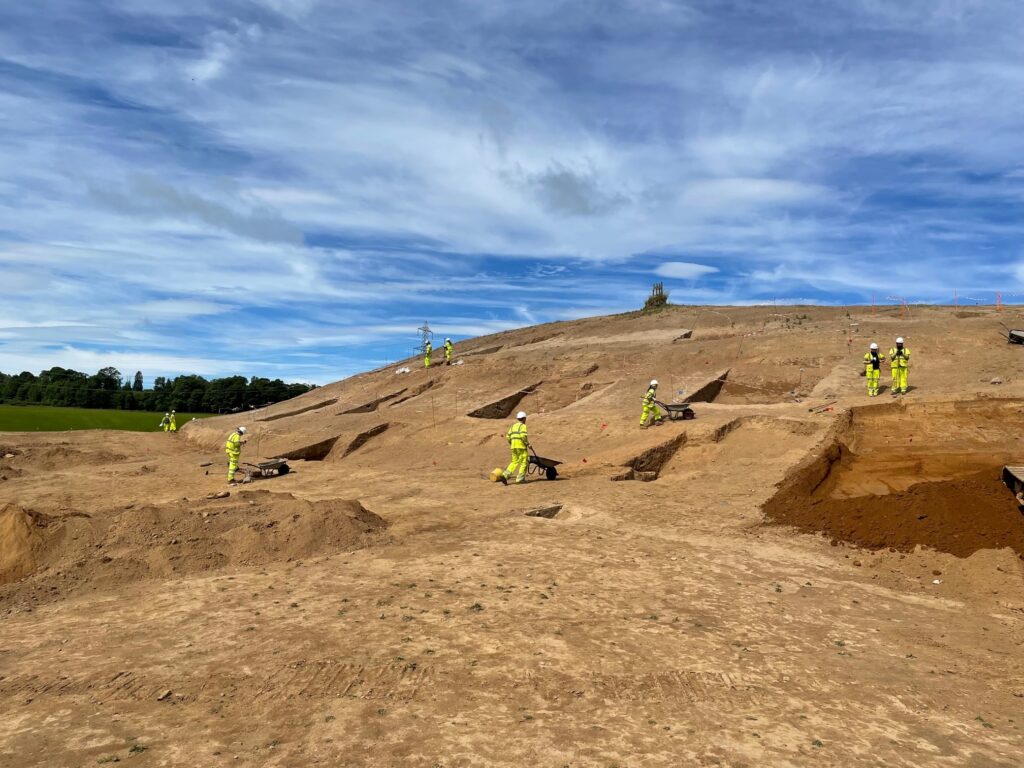
Some evidence of Iron Age metal working was also recovered during the excavation. Bog ore was found on the site along with slag – the waste material left behind after smelting iron ore. A fragment of vitrified clay was also found, part of a tuyère, part of the bellows for furnaces used in smelting and metalworking. At least two layers of vitrification were noticed on the tuyère which means smelting was carried out more than once.
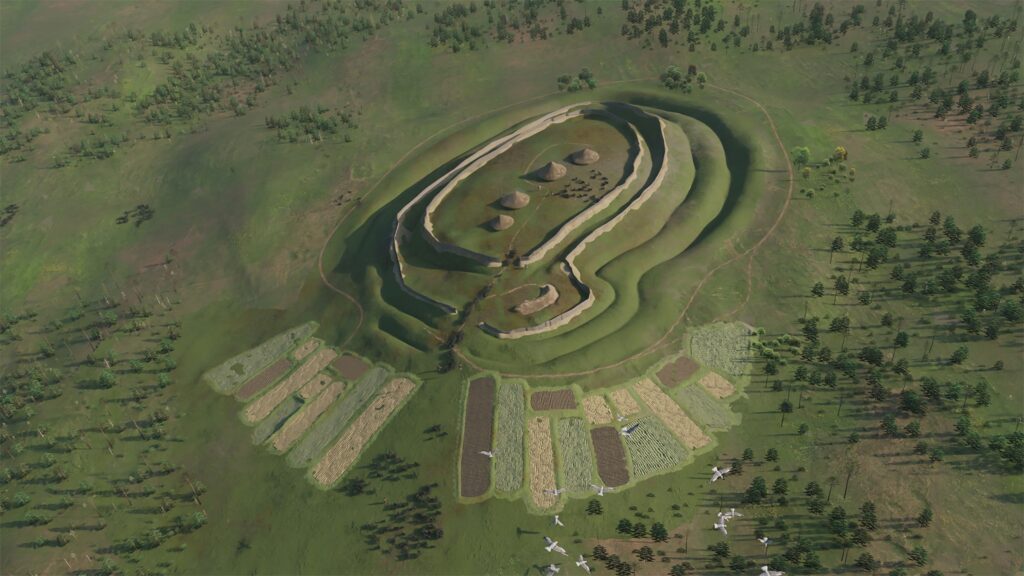
‘Later on, about 400 BC, the people here filled in part of one of the ditches to the north of the entranceway and constructed a souterrain into the back-filled ditch,’ added Kenny. ‘A third ditch and rampart were newly dug, which surrounded the new souterrain and a fourth, outer rampart and ditch were also created around the hillfort.’
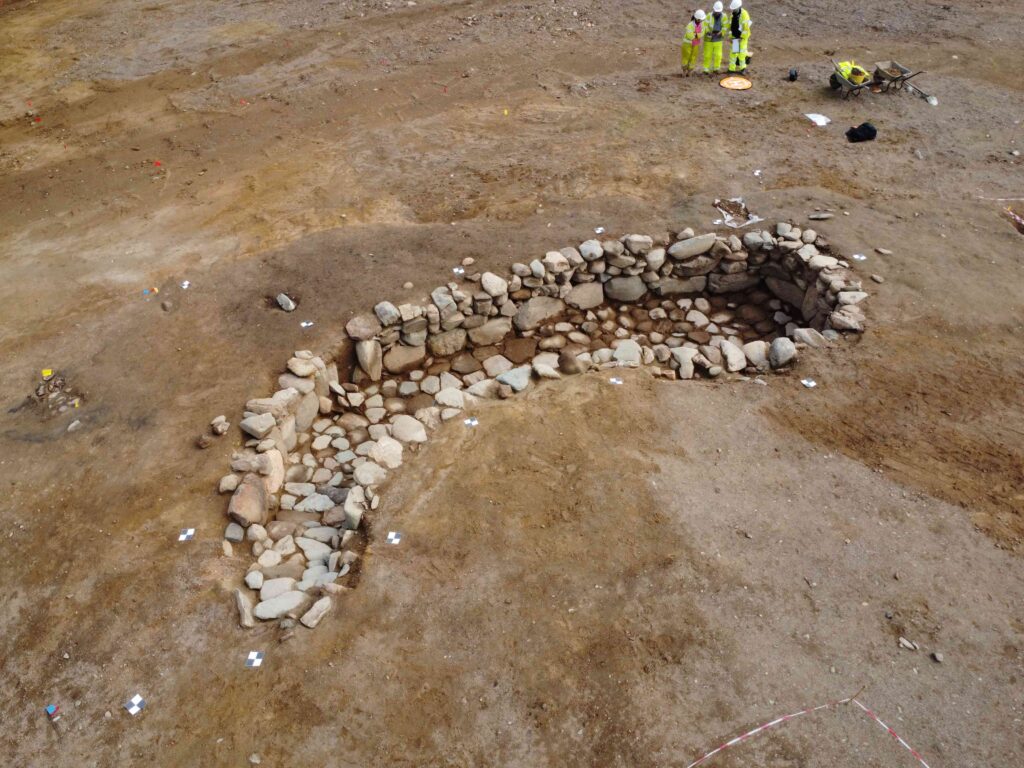
A souterrain is a semi-underground stone-built chamber and about 200 of them are known across Scotland, mostly dating to between the last few centuries BC and the first two centuries AD. These form part of the distinctive Iron Age culture of Scotland as communities across the country were open to building and using souterrains but communities to the south of the border were not, at least until Cornwall!
The souterrain found at Broxy Kennels Fort was 9 metres long and up to 4 metres wide and was over 1 metre deep. It was constructed from boulders probably brought up from the River Tay. The excavation revealed that it had a paved floor.
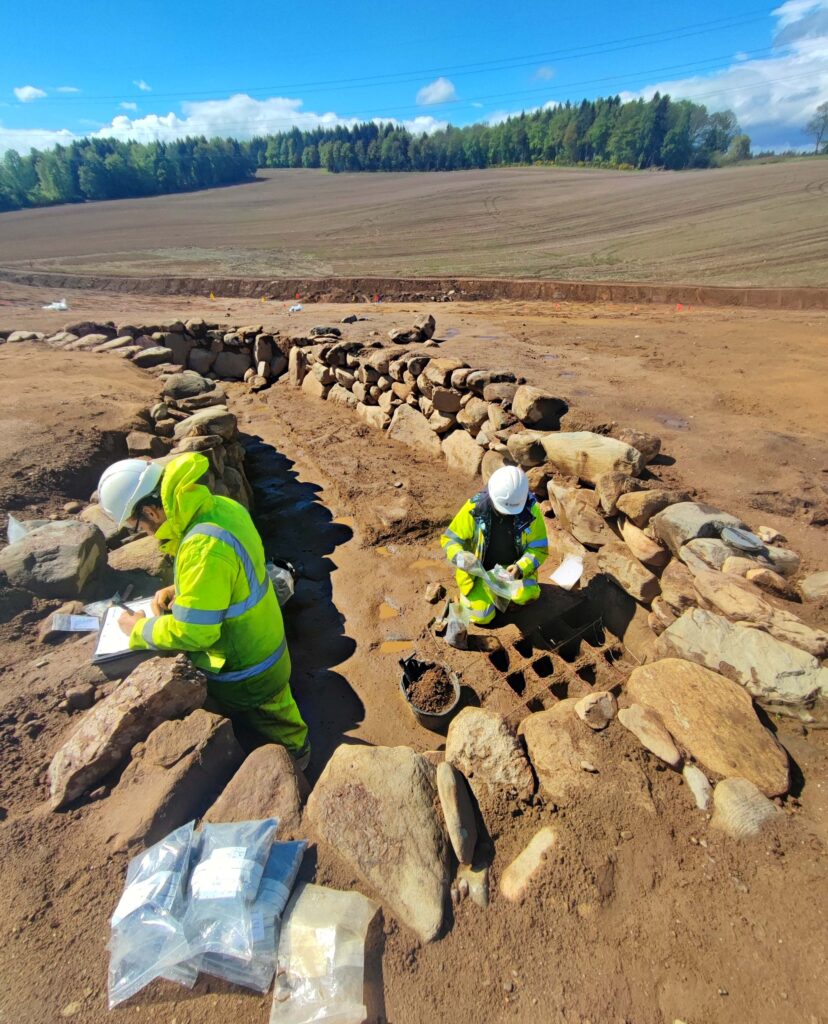
The function of the souterrain remains a mystery however despite the best efforts of the archaeologists who sampled the souterrain to a minute degree; some cereal grains were recovered from the floor deposits of the structure, but not in enough quantity to suggest it was used for grain storage. Chemical analysis of the floor deposits was also inconclusive.
By around 300 BC, the ditches and souterrain had become silted up with the loose soil of the decaying ramparts. But the hilltop settlement had not been abandoned; radiocarbon dates from pits and postholes in the interior of the fort showed that people continued to live here until the late first century AD, just before the Roman army arrived in this part of Scotland. For most of its duration then, this was not actually fortified but rather an unenclosed hilltop settlement.
‘Some of the archaeological features found in the fort’s interior may be the remains of roundhouses,’ said Kenny. ‘Centuries of ploughing, however, had eroded the top of the hill away, leaving only a few of the very deepest parts of postholes making it difficult to determine the full size and shape of any structures that may have once stood there.’
It is not clear why this Iron Age settlement was abandoned. Possibly the structure of society changed and the people moved away from this kind of settlement. Or the coming of the Roman army in the late first century AD drove the people away.
Whatever the reason, over the following two millennia, the site here was lost to the plough.
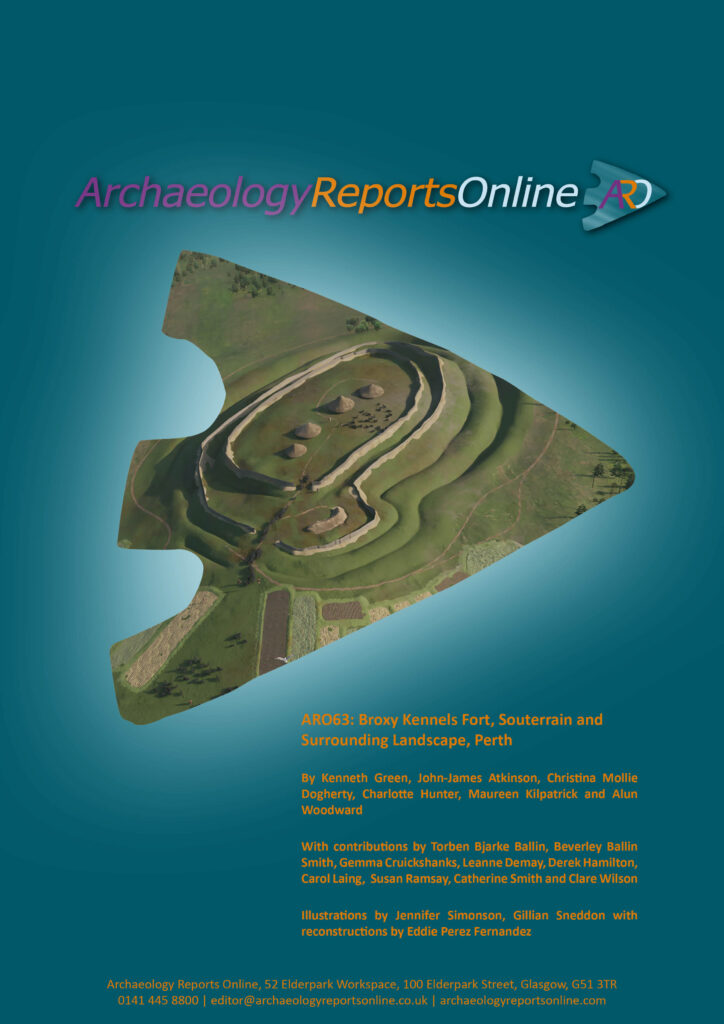
The publication of this information ensures that the Iron Age community who once inhabited Broxy Kennels Fort are not forgotten. Even though the site has been all but entirely dug away, the picture of life in Perthshire more than two thousand years ago is now better understood.
During the dig, GUARD Archaeology hosted 3 school visits, 2 university visits and several Open Days attended by over 400 visitors, and trained 10 students from the University of the Highland and Islands.
The archaeological work was funded by Perth and Kinross Council and managed by BAM Nuttall Ltd. It was required as a condition of planning consent by Perth and Kinross Council who are advised on archaeological matters by the Perth and Kinross Heritage Trust.
ARO63: Broxy Kennels Fort, Souterrain and Surrounding Landscape, Perth by Kenneth Green, John-James Atkinson, Christina Mollie Dogherty, Charlotte Hunter, Maureen Kilpatrick and Alun Woodward is freely available to download from Archaeology Reports Online.
And look out for a short booklet, Broxy Kennels HillFort by Kenny Green.
A lecture about Broxy Kennels Fort will be given at the Tayside and Fife Archaeology Conference 2025 in Glenrothes on Saturday 1 November.

